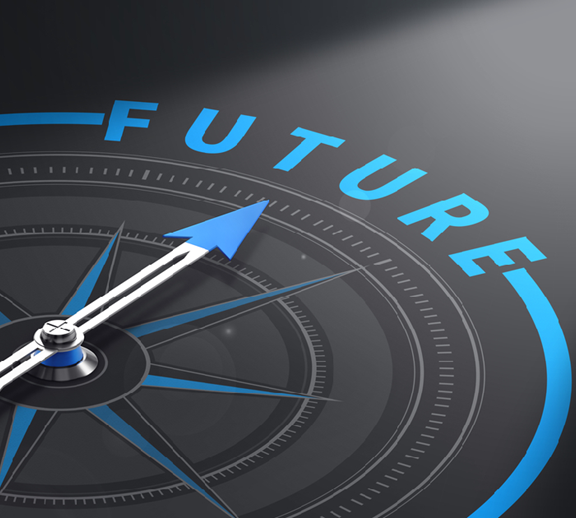Using Behavioral Economics Principles to Shape ‘Back to Work’ Practices
May 25, 2020
Leveraging behavioral economics principles such as nudge theory, framing effect, salience and vividness could be very effective in designing workplace communication aimed to drive specific behaviors.

For the first time in history people all around the world have been forced to change their behaviors at such a massive scale and in such a short span. When you look at the individual asks such as ‘wash your hands’ or ‘wear masks’, they seem fairly simple and one may argue that it is not that difficult to follow. However as quoted by Dr. K. Viswanath, a renowned professor of health communication, 'complexity is the enemy of compliance', meaning, we are expecting people to adopt a series of new practices, failing one of which may pose a threat. Adding to this are the new environments they are expected to switch between – be it virtual or new office norms – each bringing its own set of rules. This can get overwhelming for many.
In such times, it becomes extremely important for HR professionals, managers and the leaders to simplify things so that the new behaviors are still being adopted without stressing your employees out.
Let’s look at a few behavioral science principles that you can leverage to shape your ‘Back to Work’ communication.
#1 Nudge Theory
Nudge is a concept in behavioral economics that suggests that positive reinforcement and indirect suggestions can influence the behavior and decision making in people. But how can you apply this principle to your workplace communication? Let’s dive in!
Many companies would be working meticulously on their ‘back to work policies and norms’. A lot of them would have also started communicating these to their employees. But will this alone result in adoption of the desired behavior? Most likely, no. While these communications would surely help generate awareness, they are not action-oriented. The use of nudges is important to drive action. A great example could be how shops and other services drew equidistant circles to enable people to practice social distancing. While they could have made an announcement asking people to follow the rules, or designate a person to keep shouting out the same, nothing could have been as effective as illustrating the right behavior at right time and place where an individual is most likely to go back to his or her old behavior.
Here are a few simple ideas to give you a good picture of how you could apply nudges to drive favorable behaviors.
|
Behavior |
Awareness generating messaging |
Action oriented initiatives using simple nudges |
|
Social distancing in common areas |
“Employees are expected not to crowd in common areas such as cafeterias or pantries” |
Markings on floors in areas that attract long queues. (or) An alert (could be light/sound) placed outside the area indicating how crowded the place is. |
|
Practice hand hygiene |
“Employees are requested to wash their hands with soap or use hand sanitizers regularly” |
Placing hand sanitizers at each workstation to enable ease of access and remove the cognitive load of having to remember. |
|
Limit the use of meeting rooms |
“Employees are requested to limit their use of meeting rooms”
|
A signboard at the entrance of the meeting room which could read "Booked for Social Times” This would reduce the impulsive urge to rush into a meeting room out of habit. |
#2 Framing Effect
Many of our decisions and behaviors are shaped by various kinds of cognitive biases. Understanding these biases and framing your communication will have a significant impact on the outcome. One common and effective principle to apply is ‘Framing Effect’. Simply put, the framing effect is a cognitive bias where people decide on options based on whether they are presented with positive or negative connotations. Here’s how you could apply it in your workplace communication.
|
Behavior |
Awareness generating messaging |
Applying the Framing effect |
|
Social distancing in common areas |
“Employees are expected to maintain a minimum of 3 ft distance between each other” |
“You can protect 200 fellow colleagues by maintaining a minimum of 3 ft distance”
|
If you observe, when the same fact is reframed in a manner that highlights the positive implication of one practicing social distancing, it becomes all the more powerful. Framing your communication requires you to understand the context, do sufficient research, and frame your messaging keeping the key behavior you desire to drive in mind.
#3 Salience & Vividness
The most fundamental purpose of communication is to capture attention (to start with). We tend to pay attention to information that stands out and catches our eye. In communication, this means our attention will automatically be drawn to what’s dominant on the page or any other collateral you are sharing with your employees. The size of fonts, color, imagery, and placing play a critical role in highlighting the key takeaways of your communication.
In today’s context, given the amount of information flowing in from all sides, try to take a ‘less is more’ approach. Crystallize your key points in a crisp manner using just the right words, symbols, and spacing.
A great example can be using clear and vivid infographics instead of plain text.
Conclusion
Leveraging Behavioral Economics principles such as nudge theory, framing effect, salience, and vividness could be very effective in designing workplace communication aimed to drive specific behaviors. Resorting to plain one-way information dispatch or creating a false sense of fear to evoke immediate action (which can be extremely irresponsible at this time) will not take you too far.
It is important to understand that any strategy to establish new norms in a space that an employee is very familiar with is going to be challenging. Since this is a unique situation where the onus of success lies in the hands of each employee, as a leader or an HR professional you will have to take an empathetic approach and aid the behavior changes as best as possible.
Looking to build engagement and loyalty for your brand?















